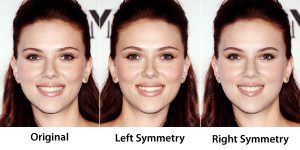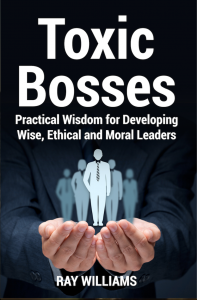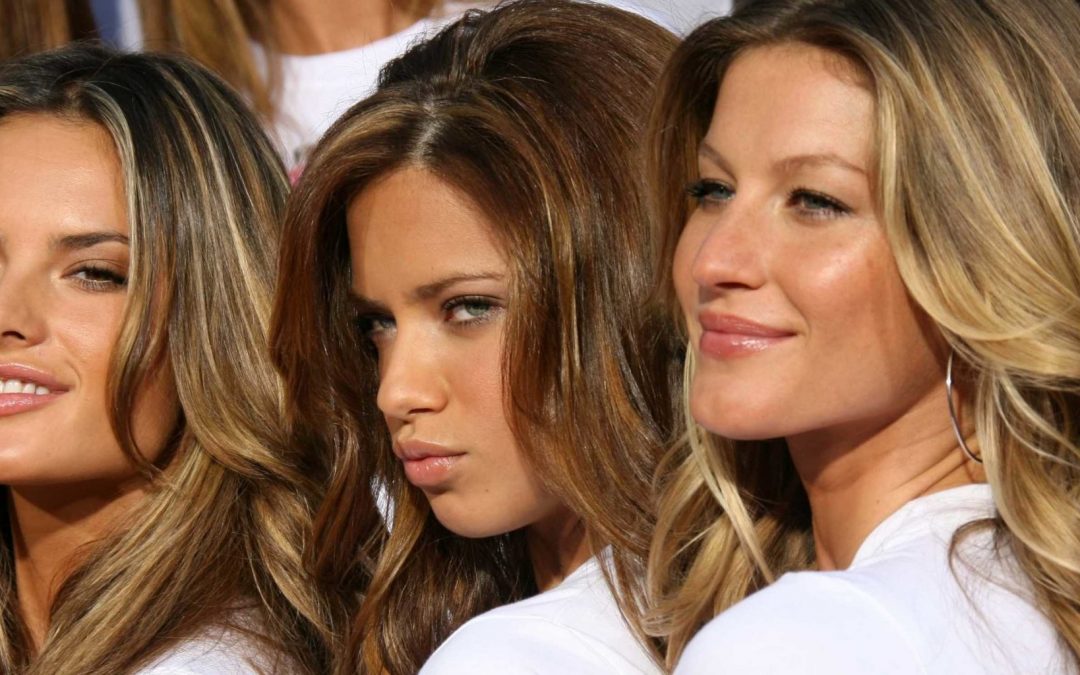By Ray Williams
March 1, 2021

Does one’s physical attractiveness have a positive or negative impact on life? Does it give you an advantage when it comes to finding a mate, getting good grades in school, getting a job or being more successful in life? Is beauty in the eye of the beholder? And while most of us would prefer a world where you are not judged solely by your appearance, should we admit the reality of that’s the way things are. What does the research tell us?
Is There a Definitive View of Beauty?
The dictionary defines beauty as “the quality or aggregate of qualities in a person or thing that gives pleasure to the senses or pleasurably exalts the mind or spirit.”
The classical Greek noun that best translates to the English-language words “beauty” or “beautiful” was κάλλος, kallos, and the adjective was καλός, kalos. However, kalos may and is also translated as ″good″ or ″of fine quality″ and thus has a broader meaning than mere physical or material beauty. Similarly, kallos was used differently from the English word beauty in that it first and foremost applied to humans and bears an erotic connotation.
The earliest Western theory of beauty can be found in the works of early Greek philosophers from the pre-Socratic period, such as Pythagoras. The Pythagorean school saw a strong connection between mathematics and beauty. In particular, they noted that objects proportioned according to the golden ratio seemed more attractive. Ancient Greek architecture is based on this view of symmetry and proportion.
Thus physical attractiveness can be seen as the degree to which a person’s physical features are considered aesthetically pleasing or beautiful. The term often implies sexual attractiveness or desirability, but can also be distinct from either. There are many factors which influence one person’s attraction to another, with physical aspects being one of them. Physical attraction itself includes universal perceptions common to all human cultures, as well as aspects that are culturally and socially dependent, along with individual subjective preferences.
Evolutionary psychologists have tried to answer why individuals who are more physically attractive should also, on average, be more intelligent, and have put forward the notion that both general intelligence and physical attractiveness may be indicators of underlying genetic fitness. A person’s physical characteristics can signal cues to fertility and health, with statistical modelling studies showing that the facial shape variables that reflect aspects of physiological health, including body fat and blood pressure, also influence observers’ perceptions of health. Attending to these factors increases reproductive success, furthering the representation of one’s genes in the population.
Most studies of the brain activations associated with the perception of attractiveness show photographs of faces to their participants and let them or a comparable group of people rate the attractiveness of these faces. Such studies consistently find that activity in certain parts of the orbitofrontal cortex increases with increasing attractiveness of faces. This neural response has been interpreted as a reaction on the rewarding nature of attractiveness, as similar increases in activation in the medial orbitofrontal cortex can be seen in response to smiling faces and to statements of morally good actions. While most of these studies have not assessed participants of both genders or homosexual individuals, evidence from one study including male and female heterosexual and homosexual individuals indicate that some of the aforementioned increases in brain activity are restricted to images of faces of the gender participants feel sexually attracted to.
With regard to brain activation related to the perception of attractive bodies, one study with heterosexual participants suggests that activity in the nucleus accumbens and the anterior cingulate cortex increases with increasing attractiveness. The same study finds that for faces and bodies alike, the medial part of the orbitofrontal cortex responds with greater activity to both very attractive and very unattractive pictures.
Across cultures, what is beautiful is assumed to be good; attractive people are assumed to be more extroverted, popular, and happy. This could lead to a self-fulfilling prophecy, as, from a young age, attractive people receive more attention that helps them develop these characteristics. In one study, beautiful people were found to be generally happier than less beautiful or plain people, perhaps because these outgoing personality traits are linked to happiness, or perhaps because beauty led to increased economic benefits which partially explained the increased happiness.
Contrary to popular belief, men and women generally agree on who is and who is not physically attractive, even across different cultures.
Research has attempted to determine which facial features communicate attractiveness. Facial symmetry has been shown to be considered attractive in women, and men have been found to prefer full lips, high forehead, broad face, small chin, small nose, short and narrow jaw, high cheekbones, clear and smooth skin, and wide-set eyes. The shape of the face in terms of “how everything hangs together” is an important determinant of beauty. Women with thick, dark limbal rings in their eyes have also been found to be more attractive. The explanation given is that because the ring tends to fade with age and medical problems, a prominent limbal ring gives an honest indicator of youth.
In Persian literature, beautiful women are said to have noses like hazelnuts. In Arabian society in the Middle Ages, a component of the female beauty ideal was for women to have straight and fine noses. In Jewish Rabbinic literature, the rabbis considered a delicate nose to be the ideal type of nose for women. In Japan, during the Edo period, a component of the female beauty ideal was for women to have tall noses which were straight and not “too tall”.
In a cross-cultural study, more neotenized (i.e., youthful looking) female faces were found to be most attractive to men while less neotenized female faces were found to be less attractive to men, regardless of the females’ actual age. In a study of Italian women who have won beauty competitions, it was found that their faces had more “babyish” (pedomorphic) traits than those of the “normal” women used as a reference.
In a cross-cultural study, Marcinkowska et al. said that 18- to 45-year-old heterosexual men in all 28 countries surveyed preferred photographs of 18- to 24-year-old white women whose faces were feminized using Psychomorph software over faces of 18- to 24-year-old white women that were masculinized using that software, but there were differences in preferences for femininity across countries. The higher the National Health Index of a country, the more were the feminized faces preferred over the masculinized faces. Among the countries surveyed, Japan had the highest femininity preference and Nepal had the lowest femininity preference.
Michael R. Cunningham of the Department of Psychology at the University of Louisville found, using a panel of East Asian, Hispanic and White judges, that the Asian, Hispanic and White female faces found most attractive were those that had “neonate large eyes, greater distance between eyes, and small noses” and his study led him to conclude that “large eyes” were the most “effective” of the “neonate cues”. Cunningham also said that “shiny” hair may be indicative of “neonate vitality”. Using a panel of blacks and whites as judges, Cunningham found more neotenous faces were perceived as having both higher “femininity” and “sociability”. In contrast, Cunningham found that faces that were “low in neoteny” were judged as “intimidating”. Cunningham noted a “difference” in the preferences of Asian and white judges with Asian judges preferring women with “less mature faces” and smaller mouths than the White judges. Cunningham hypothesized that this difference in preference may stem from “ethnocentrism” since “Asian faces possess those qualities”, so Cunningham re-analyzed the data with “11 Asian targets excluded” and concluded that “ethnocentrism was not a primary determinant of Asian preferences.” Rather than finding evidence for purely “neonate” faces being most appealing, Cunningham found faces with “sexually-mature” features at the “periphery” of the face combined with “neonate” features in the “center of the face” most appealing in men and women. Upon analyzing the results of his study, Cunningham concluded that preference for “neonate features may display the least cross-cultural variability” in terms of “attractiveness ratings”and, in another study, Cunningham concluded that there exists a large agreement on the characteristics of an attractive face.
Facial Beauty
The question is, is beauty really only skin deep, or does an attractive face actually reflect underlying good qualities? In a few ways, the stereotype that “beautiful is good” does hold. Evolutionary psychology holds that faces really are windows onto certain fundamental and important characteristics indicative of a person’s quality as a romantic partner and as a mate — qualities of health and genes, and even character.
Among the most important and consistent factors in facial attractiveness are structural qualities of the face that are highly sex-typical. An attractive man, in the eyes of female experimental participants, is generally one with relatively prominent cheekbones and eyebrow ridges and a relatively long lower face. Likewise, prominent cheekbones, large eyes, small nose, a taller forehead, smooth skin, and an overall young or even childlike appearance add to women’s allure in the eyes of male raters.
Our faces are sculpted by our hormones. These sex-typical facial features of adult men and women reflect the ratio of testosterone to estrogen or estrogen to testosterone, respectively, acting on the individual during development. We are programmed to be drawn to strong indicators of maleness (for women) and femaleness (for men) partly because they reflect an individual’s health. The reason hormones equate to health is somewhat counterintuitive. High levels of sex hormones during puberty actually suppressthe immune system, raising vulnerability to disease and infection. It sounds like a bad thing. But when a person with a particularly “male” or “female” face makes it to adulthood with all his or her health intact, it means that the person has withstood the potentially debilitating influence of those high hormones. In other words, it signifies a more robust constitution.
“Your Symmetry Lights Up the Room”
No two faces are alike, and no two halves of a face are alike. Countless small variables make faces somewhat asymmetrical – a slightly wider jaw on one side, one eye a fraction of an inch lower than the other, a cheekbone that sticks out just a wee bit more, a dimple on one cheek, etc. Some asymmetries (called directional asymmetries) are common across the population – for example, the left side of most people’s faces is slightly larger than the right. But many asymmetries, called fluctuating asymmetries, arise when one’s unfolding genetic program is perturbed during development, for instance by parasites or other environmental challenges. The slings and arrows of life’s fortunes can literally knock our faces off of kilter, just like a punch to the nose. A symmetrical face, like a particularly masculine or feminine one, is a sign of having stood up better to life’s figurative schoolyard beatings.
Numerous studies have found that when men and women are asked to compare versions of faces that are more versus less symmetrical, the symmetrical ones garner significantly higher ratings of attractiveness, dominance, sexiness, and health, and are perceived to be more desirable as potential mates. So as with masculine/feminine features, the appeal of symmetry makes perfect sense to evolutionary psychologists. In a beautiful face, we are really seeing the artistry of good genes. People prefer symmetrical faces even when they can’t actually perceive the symmetry – that is, when only face halves are presented. It may be that symmetry varies with other desirable characteristics that reflect the same genetic endowment and overall health.
It may not be all that surprising that we’d rather mate with a symmetrical Greek god or goddess than with someone who stepped out of a Picasso painting. Less obvious is that a pretty or handsome face is also generally one that is, well, average. When presented with individual faces and a composite of those individual faces, participants will judge the composite as more attractive than the individual, more distinctive faces. And the more faces that contribute to the composite, the more attractive it becomes. The most attractive faces appear to be those whose features are closest to the average in the population—that is, more prototypical.Averageness, like symmetry, reflects a favorable genetic endowment. Those with average features are less likely to be carrying harmful mutations.
However, it has also been argued that there may be some much simpler cognitive reasons for the preference for averages. Besides faces, people show a preference for average-looking dogs, average-looking birds, and average-looking watches. Prototypes are more familiar-looking than less typical examples of a given class of objects, be it the face of a potential mate or the face of a timepiece, and they are easier to process. Easy on the eyes = easy on the brain.
In the Sex of the Beholder
Men and women both show the above preferences when it comes to faces, but in general men’s preferences tend to be more pronounced. Males may place greater importance on physical beauty when it comes to mate choice, while females also attend to characteristics like power and status. But a number of factors contribute to how much — and when — male face characteristics matter to women.
One factor is a woman’s own attractiveness: Preference for masculine and symmetrical features has been shown to be higher for women who regard themselves as more attractive. Another is time of the month: The degree of women’s preferences for different attractive qualities fluctuates strikingly across the ovulatory cycle.
A group of University of Mexico psychologists have studied women’s shifting preferences for symmetrical men. They have found that this preference (which women can not only see, but even smell in tee-shirts slept in by symmetrical men) increases dramatically around the time of ovulation, when a woman is most fertile and the chance of conception is highest. So does a woman’s preference for more masculine-looking men. But this preference wanes during other times of the month. Again, evolutionary psychology provides a ready explanation.
Humans, like many other species, are socially monogamous but not necessarily sexually monogamous. When sex might result in getting pregnant, it’s health and fertility that are particularly desirable in a mate. But good genes in the sense of physical health is not the same as good genes in the sense of character, and what makes a good sperm donor may not make the best long-term, nurturing, helpful life partner. The flip side of high testosterone is an increased tendency toward aggression and antisocial behavior, a tendency to compete rather than help. Thus a male with less testosterone, indicated by less masculine features, may invest more in caring for offspring (whether or not he’s the biological father) and so may be better to have around for the long term.
In myth, beautiful women are disruptive of men’s reason, even causing them to go to war. We now know that there’s truth to the idea that men make worse decisions when exposed to female beauty, and we even are beginning to understand the neural basis. A pair of McMaster University researchers found that looking at photographs of attractive women caused a significant increase in delay discounting in men — that is, choosing a smaller immediate reward over a larger delayed one. It’s the same tendency found to a high degree in addicts and others with impaired self-control. Interestingly, viewing attractive men did not influence women’s decisions.
The rationality dysfunction effect of a beautiful face partly involves the amygdala. Activation of the amygdala, which detects the value of social stimuli, has been associated with greater discounting of all kinds of future rewards, and sure enough, this brain area shows much stronger activation to attractive faces than to more ho-hum ones. (It is actually a U-shaped relationship; the amygdala is also highly activated by unattractive faces.
In both men and women, attractive faces cause greater activation in several other brain areas involved in processing of rewards. These include the nucleus accumbens, which also activates in response to rewarding stimuli like money; the medial prefrontal cortex; and the anterior cingulate cortex, which may be involved in shaping future behavior from learning reward outcomes. In men (but not in women), the orbitofrontal cortex, an area that evaluates the reward value of current behaviors, also activates in response to attractive female faces.
Beautify Yourself
Beauty is unfair. Not everyone can be born with great genes. Not everyone can be born symmetrical. Not everyone can be born enticingly, well, average. But obviously there are many factors contributing to attractiveness that are potentially under our control.
For women, makeup doeshave a strong effect. In one study, women wearing makeup were approached more, and approached faster, by men at a bar than they were on nights without makeup. Effect sizes on beauty judgments for makeup have been found to be as high as those for the facial structural features mentioned earlier.
Getting enough beauty sleep is something everyone can do to up their beauty quotient. A group of Swedish and Dutch researchers conducted an experiment in which observers rated the attractiveness (as well as health) of participants who were photographed both after a period of sleep deprivation and after a good night’s sleep. Not surprisingly, individuals who were sleep deprived were rated significantly less attractive than those who were rested. They were also rated less healthy.
And then there are the emotions we project through our faces. Not surprising, positive emotions increase attractiveness. We are drawn to those who smile, for example. As when they wore makeup, women who smiled at men on entering a bar were more likely to be approached and were judged more favorably. Even a smile perceived only in the periphery of one’s vision will be seen as more attractive than a face with a neutral expression. And attractive faces that smile produce even more activity in the orbitofrontal cortex than do attractive faces wearing neutral expressions.
What makes someone physically attractive or “beautiful”?
- Certain physical features are preferred. High cheekbones, fuller lips, big eyes, and a thin chin are associated with sexiness in women, whereas a big jaw and broad chin are preferred in men. Smooth skin, shiny hair, and facial symmetry are also key aspects of beauty. According to various studies, these provide measures of health, good genes, intelligence, and success.


- Physically attractive people are actually healthier. Although the link between facial symmetry and real health is weak, there is some evidence that individuals with more distinct facial features, considered less attractive, are more susceptible to disease, parasites, and other illnesses. Specifically, in a study of 17-year-olds, researchers found that facial distinctiveness was linked to poor health in both men and women, either during childhood or adolescence. Facial averageness, on the other hand, was linked to good health. One theory is that distinctive facial traits are tied to chromosomal disorders. The preference for average faces may have evolved as a way of identifying a mate with good genes.
- It’s easier for physically attractive people to find mates. Men seek attractive women as mates because good looks signal youth, health, and reproductive fitness, according to several research studies.
- Physically attractive people are more intelligent. University of New Mexico researchers found that general intelligence is positively linked to body symmetry, a characteristic that is indicative of attractive qualities like health, social dominance, and fitness-related biological traits.
- Physically attractive people are more persuasive. Good-looking people can use their sex appeal to command attention and to get ahead, say in a job interview or when asking for a promotion. Attractive people are more persuasive, in part, because they also possess or develop key personality traits — like intelligence and strong social skills — that make them more effective communicators. Researchers also found that compared to unattractive speakers, attractive speakers were much more fluent talkers.
- Companies with physically attractive executives have higher sales. In a study of nearly 300 Dutch advertising agencies, economists found that firms with better-looking executives had higher revenues. Overall productivity, and resulting sales, were greater in companies with more attractive managers, partly because firms with more attractive workers have the competitive advantage when client interactions are involved. Companies that place a premium on hiring very attractive people had on average higher revenues than similar companies which did not. He says the public clearly rewards businesses with the beautiful faces. In The New York Times interview, Hamermesh found that for beautiful people in general, “Most of us, regardless of our professed attitudes, prefer as customers to buy from better-looking salespeople, as jurors to listen to better-looking attorneys, as voters to be led by better-looking politicians, as students to learn from better-looking professors.”
- Physically attractive people have an advantage in politics. Beautiful people have the upper-hand in politics, according to a study in Finland which found that both male and female political candidates who look better than their competitors are more successful.The study’s authors suggest that voters favor good-looking candidates because they enjoy watching them and they fare better in social situations. Canadian research, meanwhile, is diving deep into how beauty influences politics, finding that good-looking politicians of both sexes enjoy a distinct advantage when wooing uninformed voters. Daniel Stockemer, a political studies professor at the University of Ottawa, published the latest in a series of studies that use images of candidates in 2008 U.S. congressional elections to gauge how physical attraction affects voting preferences. A test group of more than 2,400 Canadian participants—students from University of Ottawa and Western University in London, Ont.—were shown the candidates’ photos without any indicator of the person’s name, party affiliation or qualifications. On average, these “voters” cast 34.8 per cent more ballots in favor of attractive candidates than unattractive ones; 21 per cent more for candidates whose appearances had been rated as neutral.

- Physically attractive people are perceived as more likeable and trustworthy. Beautiful people are typically treated better by others. In a study from Harvard University, researchers found that wearing makeup, shown to enhance a woman’s attractiveness, boosted people’s perceptions of that subject’s competence,likability, attractiveness, and trustworthiness.

- Physical attractiveness is correlated with height for men which gives them a financial advantage. An individual’s salary and success level are contingent upon their height and furthermore, their income can actually be penalized if the person has only attained the nation’s average height. In examining society’s perception of success, taller people appear to command a presence in the room. Therefore, tallness lends itself to the general perception of power and dominance, which is favored in effective business practices. This has been illustrated in CEOs who were found to be overall taller than the average man. To illustrate, in Malcolm Gladwell’s best-selling book Blink,he found that: “on average CEOs were just a shade under six feet. Given that the average American male is 5’9″ that means that CEOs, as a group, have about three inches on the rest of their sex. But this statistic actually understates matters. In the U.S. population, about 14.5% of all men are six feet or over. Among CEOs of Fortune 500 companies, that number is 58%. Even more strikingly, in the general American population, 3.9% of adult men are 6’2″ or taller. In another CEO sample, 30% were 6’2″ or taller.” This height advantage translates not only into a more prestigious job title, but also an impressive salary to match. The British National Child Development study conducted by Daniel Nettle of the Open University shows that the taller men are, the less likely they were to be single or childless, concluding that taller men are deemed more sexually attractive and more likely to find a mate. “In choosing a husband, size matters,” Dr. Nettle argues. A study by researchers at the University of Florida, the University of North Carolina and the University of Pittsburgh found tall people earned considerably more money throughout their careers than shorter workers.

- Physically attractive men have higher IQs. Researchers at the London School of Economics studied 52,000 people in the U.K. and U.S., and their results were conclusive: Attractive men have IQs 13.6 points above average, while attractive women score 11.4 points higher. “Physical attractiveness is significantly positively associated with general intelligence,” said the lead researcher, Satoshi Kanazawa. The research was published in the professional journal Intelligence. In what many would regard as a controversial perspective, Kanazawa says, “our contention that beautiful people are more intelligent is purely scientific,” adding, “it is not a prescription for how to great or judge others.”
- Face symmetry is seen as attractive. Charles Feng of Stanford University, writing inthe Journal of Young Investigators, contends as far back as Plato in ancient Greece, people believed in the ideal proportions of a woman’s face. Today, science has demonstrated that symmetry has been proven to be inherently attractive to the human eye, in terms of the similarity between the left and right sides of the face. Victor Johnson of New Mexico State University used a program called FacePrints, which shows viewers facial images of variable attractiveness in which viewers rate the images as a perfect 10 out of 10 in attractiveness were those images of almost perfect symmetry. A University of Louisville study gave viewers a similar test, which included photos of Asians, Latinos and other ethic groups from 13 different countries. The results were the same, with respect to symmetry. Other research has pointed to men’s preference for women with a low waist-to-hip ratio (WHRs). Elaine Wong and her team at the University of Wisconsin analyzed photos of 55 male CEOs of large companies and the companies’ return on assets. The study found that companies with CEOs who have a higher facial width relative to facial height perform better financially. The group included former CEOs Herb Kelleher of Southwest Airlines and Bob Allen of AT&T. Similarly, researchers at the University of Toronto and University of California found that female faces were deemed most attractive if the vertical distance between the eyes and the mouth was 36% of the face’s length and the horizontal distance between the eyes was 46% of the facial width.

- First impressions count. A University of British Columbia study found that people identify the personality traits of people who are physically attractive more accurately than others during short encounters. The study showed a positive bias toward attractive people. “If people think Jane is beautiful and she is very organized and somewhat generous, people will see her as more organized and generous than she really is, says lead researcher Jeremy Biesanz. The researchers argue that people are motivated to pay closer attention to beautiful people.
- Physically attractive people make higher salaries. In the workplace, your face really can be your fortune. When everything else is considered, more attractive people tend to earn more money and climb higher on the corporate ladder than people who are considered less pleasing to the eye. One study of MBA graduates found that there was about a 10 to 15% difference in earnings between the most and least attractive people in the group – which added up to about $230,000 over a lifetime.“You are being conferred advantages throughout your life, from your schooldays into the workplace,” says Walker. Economist Daniel Hamermesh, of the University of Texas, Austin, has found nicely put-together men generally have better luck than other men in snagging extra earnings, as well as fetching pretty, high-salaried wives. He led a major study in four countries, including Canada. In his new book, Beauty Pays: Why Attractive People Are More Successful, Hamermesh cites studies showing handsome men, on average, earn five-per-cent more than their less-attractive counterparts, while good-looking women earn four-per-cent more.A recent study out of the University of Wisconsin reports that hiring a beautiful person, say, as a S&P 500 company’s CEO, may boost its bottom line. The results of the study, which used an algorithm on facial beauty analysis site comto rate the attractiveness of 677 CEOs, confirmed that better-looking CEOs make more money (sometimes called a “beauty premium”). It also found that stock market returns were higher on M&A announcement dates for companies whose CEO ranked high on the Facial Attractiveness Index.
- Physically attractive students get better grades and treated better in school. Being the most beautiful or handsome is not as important as being above average, sociologist Rachel Gordon of the University of Illinois-Chicago suggests in a peer-reviewed book from the Society for Research in Child Development,which she co-authored. For both girls and boys, being rated as attractive rather than average in looks — what Gordon calls “standing out from the crowd” — is most important for adolescents, she says. “The attractive do have a GPA advantage (over) the average,” Gordon says. Findings appear in Physical Attractiveness and the Accumulation of Social and Human Capital in Adolescence and Young Adulthood. The advantage often stems from adolescence, when the better-looking get better grades and are more likely to attain a college degree, setting them on a path for economic advantages as well, she says. According to the available evidence, the bubble is a reality. Researchers Slattery Walker and Tonia Frevert found a wealth of research showing that better looking students, at school and university, tend to be judged by teachers as being more competent and intelligent – and that was reflected in the grades they gave them. Alongside metrics like “uses a textbook”, the popular Rate My Professors website gives students the option to score their lecturers’ “hotness”. This might not be as frivolous as it seems, at least according to a new paper in The Journal of General Psychology, which claims that students learn more effectively from more attractive lecturers. Richard Westfall and his colleagues at University of Nevada asked over 100 students to listen to an audio recording of a 20 minute physics lecture, delivered by a man or woman. As the students listened, they were presented with a photograph of either a highly attractive man or woman, or an unattractive man or woman, and they were told that this was the lecturer they were listening to. No note taking was allowed. The students thought the study was about the influence of different lecture styles. Next the students completed a multiple-choice quiz about the lecture content. The students who believed their lecturer was attractive scored better on the quiz than those who’d been led to believe their lecturer was unattractive (18.27 items correct on average versus 16.68 – a small but statistically significant difference). Replicating the well-established halo effect of attractiveness, the students who listened to an attractive lecturer also rated him or her more highly on a range of measures, such as teaching ability, health and intelligence and said they found it easier to pay attention and would be more motivated to learn from their lecturer, as compared with students who listened to an unattractive lecturer. The apparent beneficial effects of an attractive lecturer were the same regardless of whether the lecturer and students were the same sex or not, which to the researchers indicated the effect is cognitive in nature, to do with motivation, attention and expectations, rather than to do with sexual interest.
- Physically attractive people are treated better in the justice system.The influence of beauty does not stop at the political choices we make. Our judicial process is also susceptible to the influences of body dimension and bone structure. Researchers have found that attractive male criminal defendants are twice as likely to avoid jail time as unattractive miscreants. That’s why trial lawyers dress their clients up. The relative good looks of civil litigants also influence juries, which award twice the damages when plaintiff is better looking than the defendant and half the compensation when the defendant is more physically attractive than the plaintiff.
- Physically attractive CEOs are presumed to be more competent. A second study by Duke University researchers John Graham, Campbell Harvey and Manju Puri found CEOs are more likely than non-CEOs to be rated as competent looking. The team found that CEOs rated competent just by their appearance tended to have higher incomes.
Daniel Hamermesh, author of Beauty Pays: Why Attractive People Are More Successful, argues the belief that attractiveness is subjective is a myth: “Beauty is in the eye of the beholder,” Hamermesh writes, “but most beholders view beauty similarly.” Hamermesh also argues that unattractive individuals are “disadvantage,” in the same way those might be physically disabled or lacking intelligence, and therefore are vulnerable to discrimination. So during a recession such as we have been experiencing, attractive people will have a better chance of keeping of finding a job, and securing credit than less attractive people, he contends. This creates legal issues, he says, for less attractive people to sue for compensation for potential loss of earnings.
Hamermesh contends his research shows that attractive people charm interviewers, get hired and promoted faster, are more likely to make more sales and get paid better. You would think that the importance of attractiveness depends on the type of occupation—for example, being an actor, entertainer or broadcaster. But Hamermesh says it applies to all occupations, but more in some than others.
Some would argue that making judgments based on physical attractiveness is not a bad thing, particularly for women. Catherine Hakim, a professor of sociology at the London School of Economics, and author of the book, Erotic Capital: The Power of Attraction in the Boardroom and the Bedroom, advances a controversial perspective, suggesting professional women should use their “erotic capital”—beauty, sex appeal, charm, dress sense, liveliness, and fitness—to get ahead at work. Hakim is an expert on women’s employment and theories of female status in society. According to her, the “beauty premium” is an important economic factor in our careers, citing a U.S. survey that found good-looking lawyers earn between 10-12% more than less attractive colleagues. “Meritocracies are supposed to champion intelligence, qualifications and experience. But physical and socially attractive deliver substantial benefits in all social interaction—making a person more persuasive, able to secure the co-operation of colleagues, attract customers and sell products,” she writes in a column for a London newspaper.
Not all the research is in agreement
Contrary Views
Elliot Anderson, a social psychologist at Stanford University who believes self-fulfilling prophesy—in which a person’s confident self-perception, further perpetuated by healthy feedback from others—plays a role in success.
There are other detractors and critics of the cited research. There is no evidence that these results are actually favored in evolutionary terms, argues Adam Eyre-Walker from the Center for the Study of Evolution at the University of Sussex, contending that it may be instead the influence of culture: “We are taught to look upon tall men and small women as desirable, he says. So our preference for attractive people has been culturally created and is not hard-wired in the human species.”
“When you look at attractive people, your expectations go way up,” says Rick Wilson, the Rice University political scientist who led the study. “When they send less than you expect, you think, ‘Geez, what a snob,’ and you refuse to reward them with as much. We called this a beauty penalty.”
Wilson, who conducted his study on students at three U.S. universities, believes this phenomenon could extend to the political world. But it’s just one example of the suite of trust issues the beautiful-is-good stereotype raises. While past research shows visually appealing job candidates enjoy a clear advantage over equally qualified but less attractive rivals, it also suggests the lookers wind up paying a price after winning their positions. “We expect greater things from these people than we do from others,” notes Patzer. “When they don’t live up to our hopes, we take it out on them.” Women, in particular, have a paradoxical relationship with their best-looking peers: a U.S. study published in 1984 suggests that the better-looking a woman is, the more egocentric other females perceive her to be, even though they find her to be socially desirable. Research done five years ago in Israel found attractive women—though assumed by female peers to be independent and concerned for others—reported their own values to be socially conformist and self-promoting.
Psychologists describe the dark side of being physically attractive:
- Physically attractive people are less likely to be hired (sometimes). Although beauty can help in the search for a job, it’s not always true. When employers are making a decision about someone of the same sex, they can let their jealousy get the better of them. One recent study has suggested that people who are highly attractive are at a disadvantage in the hiring process when the decision-makers are the same sex. It seems we perceive beautiful people who are the same sex as a threat.
- Physical attractiveness limits job choice for females. There’s evidence that female beauty can be a problem in jobs with strong gender stereotypes. For example a beautiful woman may be at a disadvantage when applying for a job which is associated with masculinity, like a prison guard or a mechanical engineer. The same doesn’t seem to be true for attractive men. They can happily apply for jobs as nurses, lingerie salespersons or HR managers without their beauty counting against for or against them.
- Successful physically attractive people are judged more harshly. If beautiful people are successful, is it because of their talent, or is it just their looks? After all, people are lucky to be beautiful and we know all the advantages of that. Research finds that when judging their own sex, people are more likely to think beautiful people’s success is due to their beauty, not their talent.
- Many physically attractive people face social rejection. Although attractive people are generally more popular socially, there’s some evidence that very attractive people can experience social rejection from members of their own sex. People in relationships also protect themselves from beauty by ignoring it. Research shows that when we’re thinking about love we automatically ignore attractive members of the opposite sex, probably to protect our feelings about our long-term partner. Research has shown that when women and men look at gorgeous women’s success, they immediately tend to credit their success to their looks,and not any talents or brains they may possess. Actually, beauty has both positive and negative effects on us. Chances are she’ll be taken more seriously by a male, but not by much. If she’s being scrutinized and considered by other women, then the highly attractive woman is at a big disadvantage. Probably the most difficult thing a beautiful woman has to deal with is social rejection. When it comes to members of her own sex she is often an outcast. As listed by the Top 10 Things that make a woman threatening to other women, the #1 threat is beauty. Whether it’s true or not, other women perceive the beauty as a threat to steal their man away. They may not trust their spouse/boyfriend/lover in the presence of such beauty, and simply prefer to reject her instead.
- Physical attractiveness can have a negative effect on income. Researchers have previously found that income is associated with attractiveness, leading to the idea of both a beauty premium and an ugliness penalty. A common explanation is discrimination: employers seek out beautiful people and reject or ignore those harder on the eye. But in the Journal of Business Psychology, Satoshi Kanazawa and Mary Still have published research aiming to upset this. The biggest takeaway is that being perceived as very unattractive may not incur an income penalty at all. The researchers drew on a longitudinal study of 20,000 young Americans, interviewed at home at age 16 and then on three more occasions up to the age of 29. Overall, there was a positive association between attractiveness and earnings. But there was an anomaly: very unattractive participants kept bucking the trend. Those participants who were rated very unattractive at age 29 were earning significantly more than people judged more attractive than them, including (though to a lesser extent) the very attractive. The correlation between extreme unattractiveness and higher pay remained using median earnings and looking separately at men and women. The authors argue this is hard to square with the usual discrimination explanation for why attractiveness (or lack of it) is associated with income. After all, why would employers be less discriminatory towards the worst-looking people?
- Physically attractive people may have less stable long term relationships. You probably won’t be reaching for your violin too quickly but a series of new studies provide compelling evidence that beauty is a kind of “relationship liability”. While more physically attractive people have a clear advantage when it comes to finding partners, the results suggest that their relationships are more likely to breakdown, at least in part because they take greater interest in alternative partners, especially when dissatisfied in their current relationship. It seems there are complicating factors: jealousy is one, and this research, published in Personal Relationships, suggests that less stability in their romantic relationships is another. Christine Ma-Kellams at Harvard University and her colleagues began by asking two women to judge the attractiveness of 238 men as pictured in their high school yearbooks aged 17 to 18. The researchers then accessed Ancestry.com to find the men’s marriage and divorce data for the 30 years since their high school photos were taken. The men who were rated as more facially attractive were more likely to be divorced and to have had marriages of shorter length. Next the researchers accessed the divorce and marriage data for the top 20 actors and actresses listed on IMDB.com and the world’s 100 most powerful celebrities according to Forbes (removing duplicates resulted in a list of 130 celebs). The same female raters who judged the men’s attractiveness in the first study also rated the attractiveness of the celebrities. The more attractive celebrities were more likely to be divorced and they tended to be married for shorter lengths of time. A final study conducted on Amazon’s Mechanical Turk survey website was similar but added a couple of twists: some participants were first made to feel attractive by looking at pictures of unattractive people before rating their own attractiveness; also participants in this study rated their satisfaction with their current relationship. All participants then went on to rate the physical appeal of several images of good-looking people of the opposite sex. The results showed that participants made to feel physically attractive tended to rate the good-looking people in the photos as more appealing, but only if they were currently in a relationship with which they were dissatisfied.
- Physical attractiveness can work against both male and female employees at performance review time, according to Professor Comila Shahai-Dennin. Bosses regard good-looking employees as failing because of their own shortcomings, but they see less-attractive workers as victims of circumstance. In addition, co-workers often perceive the very attractive as self-centered and even resent them. Finally, those with superstar appearances sometimes rely on those looks instead of putting forth the same effort as average-looking workers.
- Physically attractive people can be lonely. And the bubble of beauty can be a somewhat lonely place. One study in 1975, for instance, found that people tend to move further away from a beautiful woman on the pathway – perhaps as a mark of respect, but still making interaction more distant. “Attractiveness can convey more power over visible space – but that in turn can make others feel they can’t approach that person,” says Frevert. Interestingly, the online dating website OKCupid recently reported that people with the most flawlessly beautiful profile pictures are less likely to find dates than those with quirkier, less perfect pics– perhaps because the prospective dates are less intimidated
The law firm Slater and Gordon conducted a poll of 2,000 office-based staff working from home during lockdown. The report found many trends described in the book, Aesthetic Labour, are widespread and continuing despite remote working. The book reports over 20 years of research and thinking about this problem. Although the research started by focusing on frontline work in hospitality and retail, the same issue has expanded into a diverse range of roles including academics, traffic wardens, recruitment consultants, interpreters, TV news anchors and circus acrobats.
Companies think that paying greater attention to employees’ appearance will make them more competitive, while public sector organizations think it will make them more liked. As a result, they are all becoming ever more prescriptive in telling employees how they should look, dress and talk.
It happens both to men and women, though more often to women, and is often tied in more broadly with sexualizing them at work. For example, while Slater and Gordon found that one-third of men and women had “put up with” comments about their appearance during video calls, women were much likelier to face degrading requests to appear sexier.
When researchers analyzed ten years of employees’ complaints about lookism to the Equal Opportunities Commission in Australia, they found that the proportion from men was rising across sectors but that two-thirds of complaints were still from women. Interestingly, the University of Memphis study found no correlation for male academics between how their looks were perceived and how their performance was rated.
Not only has this trend continued during the pandemic, it might even have been compounded. With the first genuine signs of rising unemployment reported this month, research already suggests a 14-fold increase in the number of applicants for some job roles. For example, one restaurant in Manchester had over 1,000 applicants for a receptionist position, while the upmarket pub chain All Bar One reported over 500 applicants for a single bar staff role in the UK.
Employers are now clearly spoilt for choice when it comes to filling available positions, and those perceived to be better looking will likely have a better chance. We know from research by the University of Strathclyde’s Tom Baum and his colleagues that the hospitality industry was precarious and exploitative enough even before COVID.
There are various forces to blame for much of this, from an economy that allows pickiness to a plastic-surgery industry that encourages superficial notions of beauty. In reality, it’s a confluence of cultural forces that has reflects a clutching, desperately, to an ever-evolving beauty ideal. Today’s young workers were reared on the kind of reality TV and pop culture that screams, again and again, that everything is a candidate for upgrade. We’ve watched bodies transformed on Extreme Makeover, faces taken apart and pieced back together on I Want a Famous Face. We compare ourselves with the airbrushed images in advertisements and magazines, and read surveys—like this one—that confirm our worst fears. We are a culture more sexualized than ever, with technology that’s made it easier than ever to “better” ourselves, warping our standards for what’s normal. Plastic surgery used to be for the rich and famous; today we’ve leveled the playing field with cheap breast enlargements, tummy tucks, and outpatient procedures you can get on your lunch break.
Summary:
Whether we like it or not, and whether it’s less a case of cause and effect than correlation, in Western culture, which is highly influenced by media and advertising, research shows beauty matters; it pervades our society and how we choose our leaders, our loved ones and friends, bosses and co-workers. On the other hand, making judgments and decisions about people in terms of relationships, hiring, promotion and compensation solely based upon physical attractiveness—or even being influenced by it—is clearly discriminatory and ultimately harmful.
My perspective on the issue is that while our culture has come a long way in instituting non-discriminatory practices in the workplace and institutions, physical attractiveness continues to provide an advantage for people in work and life.
Copyright: Neither this article or a portion thereof may be reproduced in any print or media format without the express permission of the author.
Read my latest books:
Toxic Bosses: Practical Wisdom for Developing Wise, Moral and Ethical Leaders,

and,


